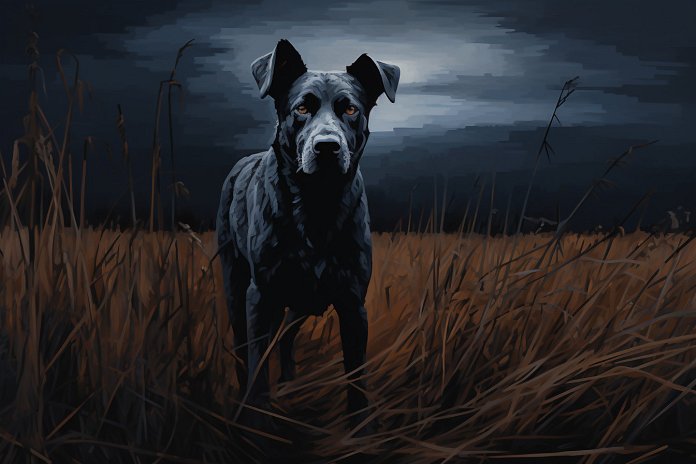
We have always been fascinated by our dogs and eager to understand them better. There has been extensive research on how dogs see the world, but misinformation about their vision has spread over the past century. Recent research has revealed that our previous beliefs about dogs’ vision were completely false, and we now know that dogs have better vision than we thought. Contrary to popular belief, dogs are not colorblind.
Signs Dogs Can See Colors
Dogs display various signs that they can see colors, although these signs can be difficult to recognize. For example, observe how your dog interacts with its toys. You may notice that your dog prefers some toys over others. Does your dog avoid a bright red toy that you thought it would love? Does it always choose the blue or yellow toy you bought years ago? There is a reason for this.
Dogs can see a limited range of colors, primarily in shades of blue and yellow, similar to people with red-green colorblindness. Green and red are not visible to dogs, so when purchasing toys or other products for your dog, you should focus on blue and yellow items.
Body Language
Some body language signs that indicate dogs can see colors include being alert, barking, wagging their tail, raising their ears, and perking their ears up.
Other Signs
Other signs that dogs can see colors include preferring one color of the same toy over another, wagging their tail at the sight of a toy in a color they can see, and losing toys of certain colors in grass.
History of Dogs Being Able to See Colors
For decades, people believed that dogs could not see any color at all. This myth originated in the 1930s when Will Judy, the founder of National Dog Week, claimed that dogs have poor vision and can only see in shades of gray. In the 1960s, this belief was further supported without any scientific evidence. However, in 2013, Russian researchers discovered that dogs can indeed see some colors, albeit in a limited range.
Science Behind Dogs Being Able to See Dark Gray
The difference in vision between dogs and humans can be attributed to the biological differences in their eyes. Dogs have more rods, which aid in low-light vision, allowing them to see better in the dark. They also have larger lenses and corneal surfaces, enabling more light to enter their eyes. While humans have three types of cones for seeing colors, dogs only have two, making them unable to perceive green and red or any colors containing them. Dogs can see shades of yellow and blue.
Dealing with Dogs Seeing Colors
Now that we understand how dogs see colors, we can better cater to their visual needs. When buying toys or other items for your dog, consider their limited color vision and choose items that appear vivid to them, such as those in blue and yellow. During games of fetch, avoid toys that blend in with the grass. Instead, opt for bright and vibrant toys. It is important not to force your dog to do tasks that rely on color discrimination, but you can teach them to sort toys based on whether they have color or not.
“Dogs have better vision than we thought: Understanding how dogs see colors”

Tips & Things to Know
1️⃣ Dogs can see some colors, but their range is limited. They can see shades of blue and yellow, but not green or red. When buying toys or other products for your dog, look for items that are blue and yellow to cater to their vision.
2️⃣ Pay attention to your dog’s body language to determine if they can see colors. Signs such as being alert, barking, wagging their tail, and raising their ears can indicate that they can see colors.
3️⃣ Be mindful of the colors of toys when playing fetch with your dog. Avoid toys that blend in with the grass, such as green toys, and opt for bright and vibrant colors that stand out. Red toys may appear gray to your dog, so they may not be as interested in them.
Frequently Asked Questions, Answered ✅
1. What is the misconception about dogs’ vision that has been debunked?
– The misconception was that dogs are colorblind, but it is now known that they can see some colors.
2. What colors can dogs see?
– Dogs can see shades of blue and yellow, but they cannot see green or red.
3. What are some signs that indicate a dog can see colors?
– Some signs include favoring toys of certain colors, wagging their tail at the sight of a toy in a color they can see, and losing toys of certain colors in grass.
4. Why do dogs have better vision in low-light conditions?
– Dogs have more rods in their eyes compared to humans, which help with low-light vision. They also have larger lenses and corneal surfaces, as well as a reflective membrane on their eyes.
5. How should dog owners consider their pet’s vision when selecting toys or objects?
– Dog owners should choose toys and objects in blue and yellow, as these colors are more vivid to dogs. They should avoid toys that are red or green, as they may appear as shades of gray to dogs.